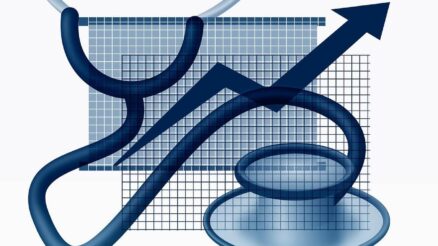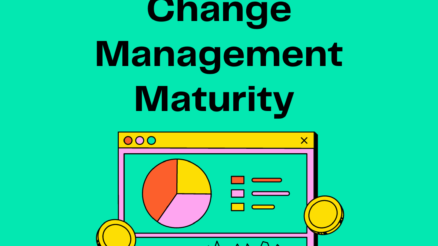Change is inevitable.
Whether it’s the introduction of new technologies, shifting market trends, or evolving customer demands, business organizations must be able to adapt quickly to remain competitive.
This is where the Kaizen Change Model comes in.
Kaizen, a Japanese word meaning “continuous improvement,” is a philosophy and methodology that focuses on making small, incremental changes to processes and systems to achieve better results.
This blog post will discuss the Kaizen Change Model and its role in change management.
We will also examine the key principles of the model, the phases involved in the process, and the benefits and challenges of using this approach to implement change.
Let’s dive in
Brief History of Kaizen Change Model
The term “Kaizen” comes from the Japanese words “kai” and “zen,” which mean “change” and “good” or “better,” respectively. Kaizen’s philosophy is based on continuous improvement, where small, incremental changes are made to processes and systems to achieve greater efficiency and effectiveness.
The Kaizen philosophy was first developed by Masaaki Imai, a Japanese consultant who wrote the book “Kaizen: The Key to Japan’s Competitive Success” in 1986. Imai’s book popularized the concept of Kaizen in the Western world, and businesses and organizations around the globe have widely adopted it.
What is Kaizen Change Model?
The Kaizen Change Model is a methodology for continuous improvement that emphasizes making small, incremental changes to processes and systems to achieve better results. The model is based on teamwork, respect for people, and a commitment to ongoing improvement.
It involves a structured approach to identifying areas for improvement, developing and implementing solutions, and measuring the impact of those solutions. The model is designed to be flexible and adaptable to different industries and organizations and is often used in manufacturing, healthcare, and service industries.
05 Phases of Kaizen Change Model
There are 05 phases of the Kaizen Change Model; let’s explore each.
1. Plan
The first phase of the Kaizen Change Model is Plan. This phase focuses on identifying areas for improvement and developing a plan to address them.
This involves gathering data, analyzing processes, and setting goals for improvement. The Plan phase is critical because it lays the foundation for the entire change process and ensures that the team is aligned on the goals and objectives of the project.
To illustrate this phase, let’s consider an example from the healthcare industry. A hospital may identify that patient wait times in the emergency department are too long, leading to decreased patient satisfaction and potential negative health outcomes.
In the Plan phase, the hospital would gather data on wait times, analyze the processes contributing to long wait times, and set goals for reducing wait times. They may also form a team of staff members, including nurses, doctors, and administrators, to lead the improvement efforts.
During the Plan phase, the team may use flowcharts, process maps, and value stream analysis tools to identify inefficiencies in the emergency department process. They may also conduct surveys or focus groups with patients to gather feedback on their experiences.
Based on this data, the team can develop an improvement plan, which may include redesigning the layout of the emergency department, implementing new triage protocols, or training staff on more efficient processes.
2. Do
In this phase, the focus is on implementing the plan developed in the previous phase. The Do phase involves testing and piloting the proposed changes and training staff on new processes and procedures.
This phase is important because it allows the team to validate their assumptions and ensure the proposed changes are feasible and effective.
To illustrate this phase, let’s continue with the example from the healthcare industry. After the hospital team developed a plan to reduce patient wait times in the emergency department, they would move on to the Do phase.
During this phase, the team would implement the proposed changes, which may include redesigning the layout of the emergency department, implementing new triage protocols, and training staff on more efficient processes.
During the Do phase, the team would test and pilot the changes on a small scale before rolling them out more broadly. For example, they may implement the new triage protocols with a select group of patients or test the new emergency department layout with a limited number of staff members. This allows the team to identify any issues or challenges with the proposed changes before fully implementing them.
Once the changes have been tested and validated, the team trains staff on the new processes and procedures. This may involve providing hands-on training, conducting simulations, or developing training materials such as job aids or standard operating procedures. By ensuring that staff are trained and prepared for the changes, the team can help to ensure a smooth transition to the new processes.
3. Check
This phase measures the impact of the changes implemented in the previous phase. The Check phase involves collecting data and analyzing the results to determine whether the changes have had the desired effect.
This phase is important because it helps to ensure that the improvements are sustainable and that the organization continues to see the benefits over time.
For example, after the hospital team implemented changes to reduce patient wait times in the emergency department during the Do phase, they would move on to the Check phase. During this phase, the team would collect data on patient wait times and compare it to the baseline data collected in the Plan phase.
The team would also analyze other metrics, such as patient satisfaction, staff morale, and operational efficiency, to determine whether the changes have had a positive impact. For example, they may find that patient wait times have decreased by 50% and that patient satisfaction scores have increased.
They may also find that staff morale has improved and that the emergency department is operating more efficiently due to the changes.
The team can determine whether the changes have been successful and sustainable based on the data collected and analyzed during the Check phase. If the changes have had the desired impact, the team can move on to the final phase of the Kaizen Change Model Act. If the changes have not had the desired impact, the team may need to go back to the Plan phase and develop a new plan to address the issues.
4. Act
The fourth and final phase of the Kaizen Change Model is Act. In this phase, the focus is on standardizing the changes that have been made and integrating them into the organization’s culture and processes. The Act phase involves documenting the new processes and procedures, training staff on the new ways of working and making the changes a permanent part of the organization’s operations.
For example, after the hospital team measured the impact of the changes implemented to reduce patient wait times in the emergency department during the Check phase, they would move on to the Act phase. During this phase, the team would document the new processes and procedures and create a standard operating procedure (SOP) for the emergency department.
The team would also train all staff members on the new processes and procedures to ensure they are followed consistently and effectively. This may involve providing additional training, creating job aids, or developing training materials such as videos or e-learning modules.
Finally, the changes would be integrated into the organization’s culture and processes. This may involve changing performance metrics and rewards systems to reflect the new working methods. It may also involve communicating the changes to stakeholders, such as patients and families, to ensure they understand the changes and how they will benefit.
The team can ensure that the improvements are sustained over time by making the changes a permanent part of the organization’s operations. This can lead to further improvements in patient outcomes, staff satisfaction, and operational efficiency.
5. Sustain
The fifth and final phase of the Kaizen Change Model is Sustain. In this phase, the focus is on continuously monitoring and improving the changes made to ensure they are sustained over the long term. The Sustain phase involves establishing systems and processes to monitor the changes and identify opportunities for further improvement.
Let’s continue with the example from the healthcare industry. After the hospital team documented the new processes and procedures and integrated them into the organization’s culture and processes during the Act phase, they would move on to the Sustain phase. During this phase, the team would establish systems and processes to monitor patient wait times and other metrics to ensure that the improvements are sustained over time.
For example, the team may establish a quality improvement (QI) committee to monitor the emergency department’s performance and identify opportunities for further improvement. The QI committee may review data on patient wait times, patient satisfaction, and staff satisfaction to identify areas for improvement.
The team may also establish a feedback system for patients and families to provide feedback on their experiences in the emergency department. This feedback can be used to identify improvement areas and ensure that the changes made meet the needs of patients and families.
By continuously monitoring and improving the changes made, the team can ensure that the improvements are sustained over the long term. This can lead to further improvements in patient outcomes, staff satisfaction, and operational efficiency.
Advantages of the Kaizen Change Model
There are several advantages of using the Kaizen Change Model for organizational change:
- Incremental improvements: The Kaizen Change Model emphasizes making small, incremental improvements rather than large, sweeping changes. This approach allows organizations to make changes more easily without disrupting their day-to-day operations.
- Continuous improvement: The Kaizen Change Model encourages a culture of continuous improvement. Organizations can constantly improve their processes, products, and services by making small, ongoing improvements.
- Employee engagement: The Kaizen Change Model emphasizes involving employees in the change process. This approach can increase employee engagement, as employees are more likely to feel invested in the changes and contribute their ideas and suggestions.
- Faster results: The Kaizen Change Model can lead to faster results than other change models. By making small, incremental improvements, organizations can see improvements more quickly, leading to increased morale and motivation.
- Cost-effective: The Kaizen Change Model is often more cost-effective than other change models. Organizations can avoid the high costs associated with large-scale change initiatives by making small improvements over time.
- Sustainable change: The Kaizen Change Model emphasizes making changes a permanent part of an organization’s culture and processes. This can lead to sustainable change and long-term improvements in organizational performance.
Disadvantages of the Kaizen Change Model
While the Kaizen Change Model has many advantages, there are also some potential disadvantages that organizations should be aware of:
- Slow pace: The incremental approach of the Kaizen Change Model can be a disadvantage if the organization needs to make rapid changes. If the organization is facing a crisis or needs to adapt quickly to a changing market, the slow pace of the Kaizen Change Model may not be sufficient.
- Lack of big-picture thinking: The focus on incremental improvements may lead to a lack of big-picture thinking. While the model can effectively improve specific processes or products, it may not address larger, systemic organizational issues.
- Resistance to change: While involving employees in the change process can increase engagement and buy-in, some may resist change. This resistance can slow down the change process and make it more difficult to achieve the desired results.
- Overemphasis on process improvement: The Kaizen Change Model focuses on process improvement. While this is important, it may not be sufficient to address larger organizational issues, such as a lack of innovation or a need for a new business model.
- Limited scope: The Kaizen Change Model may not be suitable for all types of organizational change. For example, it may be less effective for changes requiring significant investment or affecting multiple departments or teams.
Final Words
Suppose you are considering implementing the Kaizen Change Model in your organization. In that case, it is important to approach it with an open mind and a willingness to involve employees in the change process. By setting realistic goals, making small improvements over time, and establishing a culture of continuous improvement, you can achieve sustainable change and improve organizational performance.
So, consider the Kaizen Change Model if you are looking for a change model that can help you achieve continuous improvement and engage employees in the change process. It may take time and effort to implement, but the results regarding increased efficiency, effectiveness, and competitiveness in the marketplace can be worth it.



